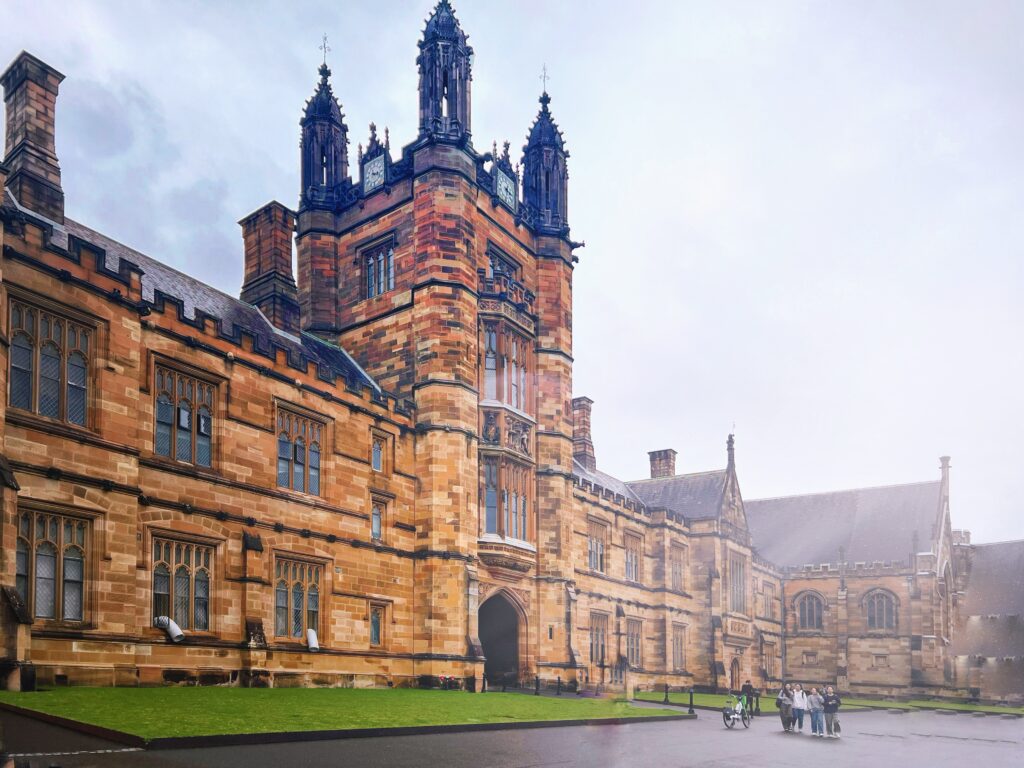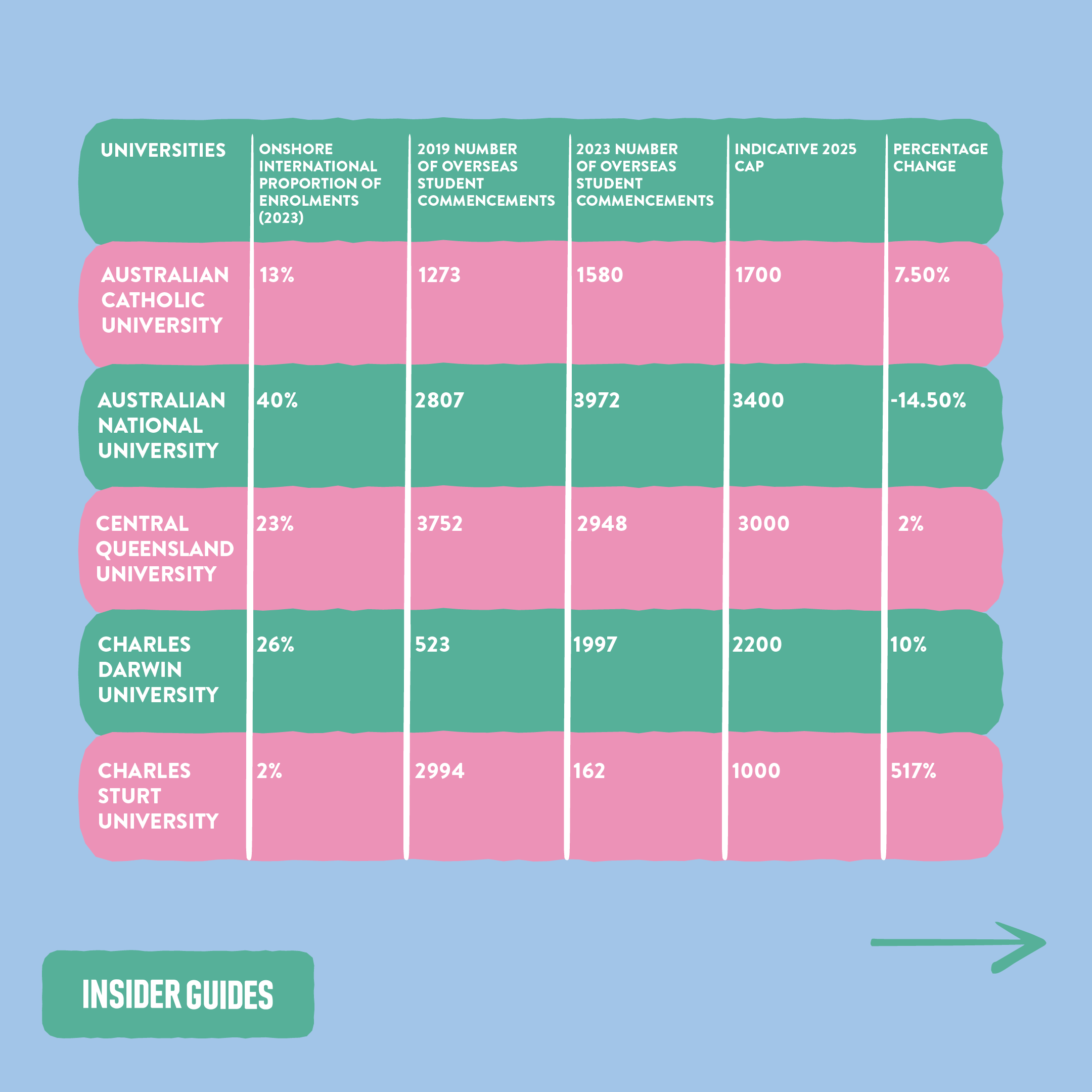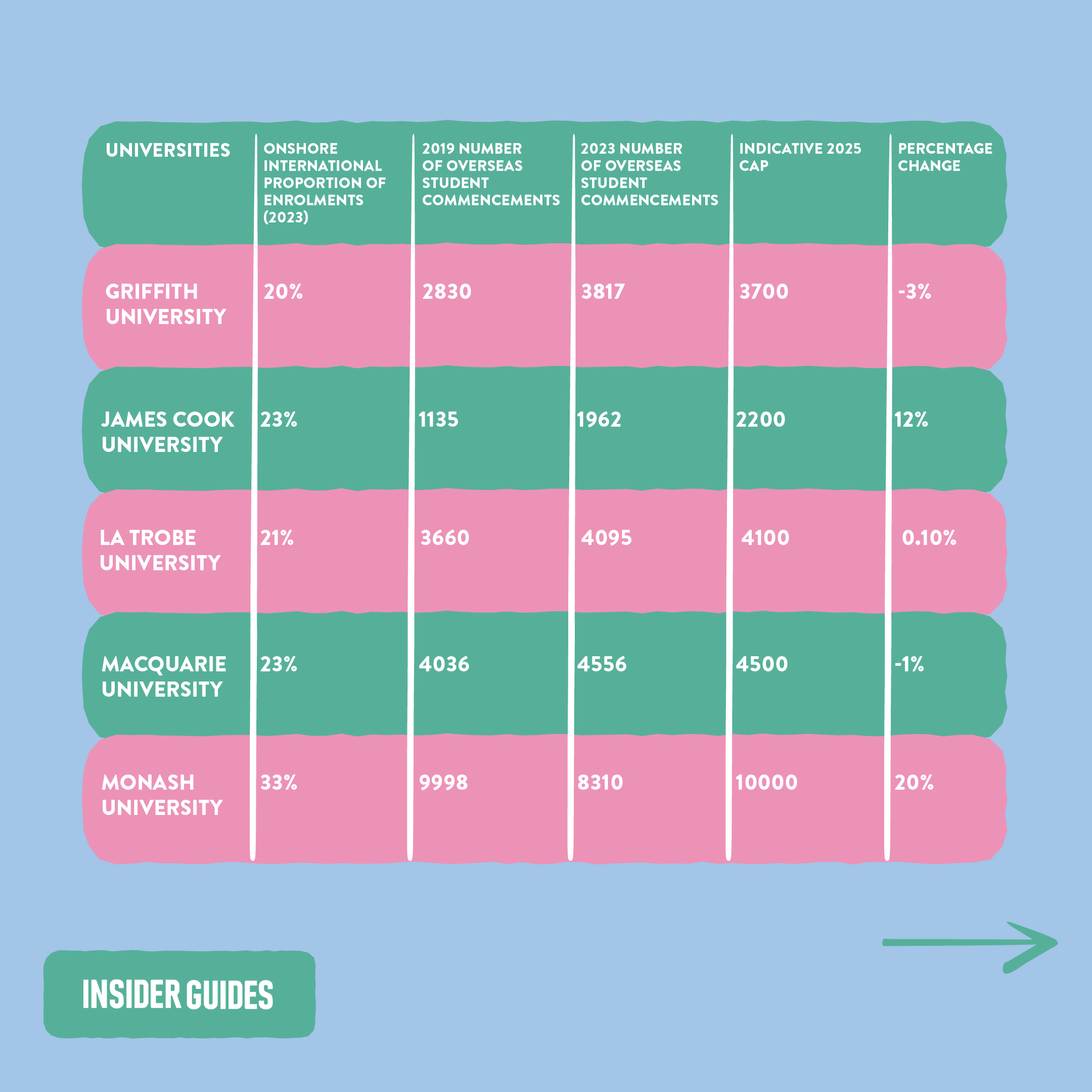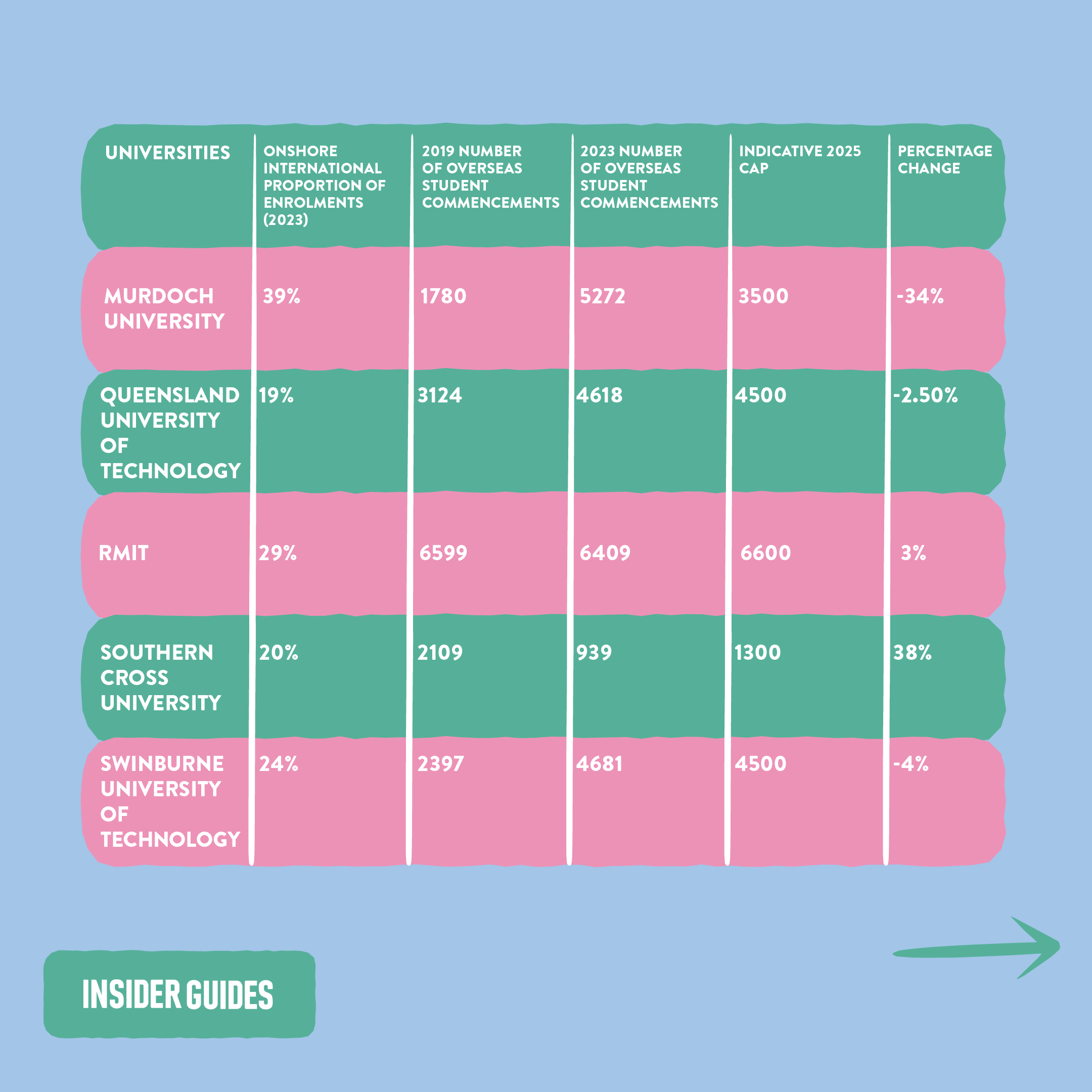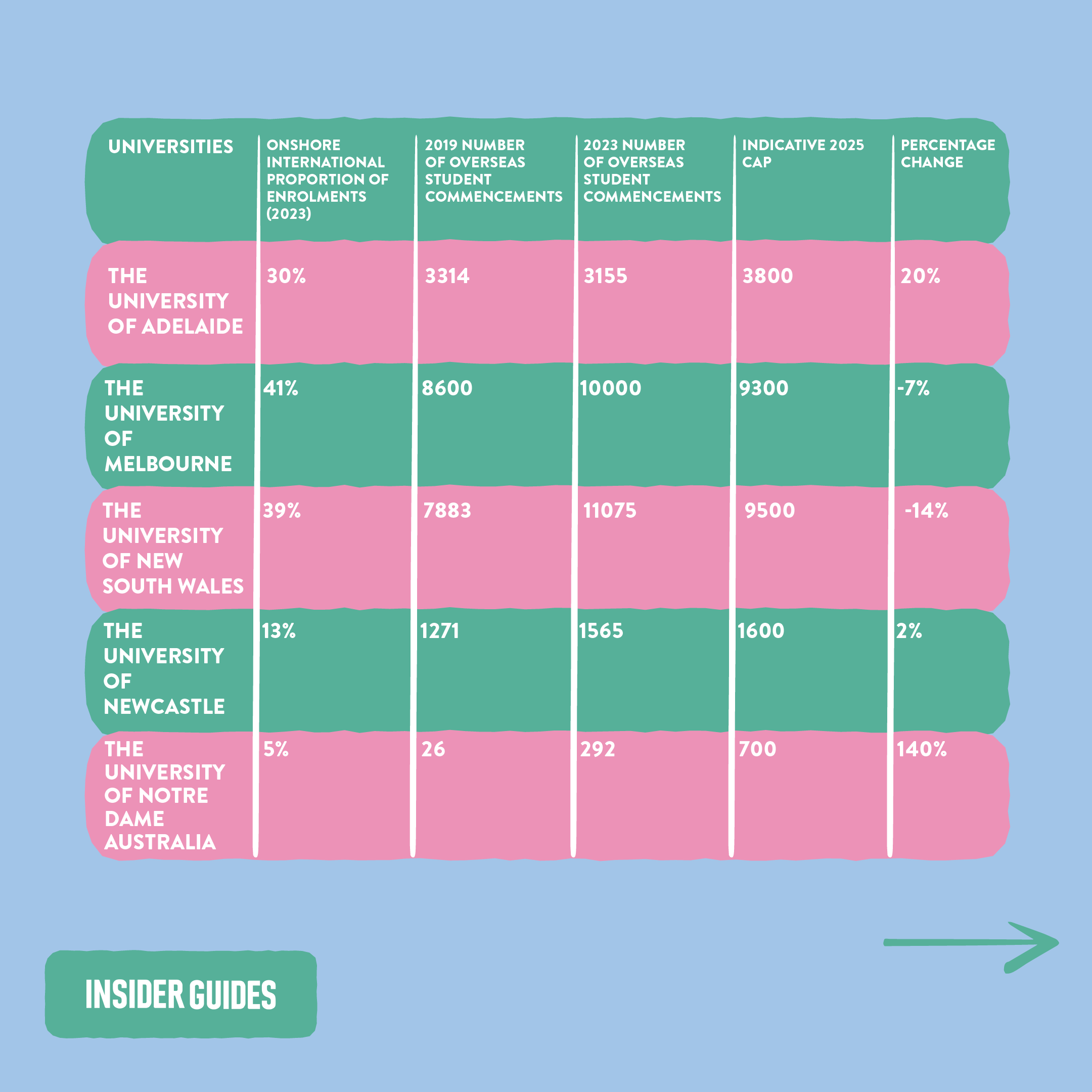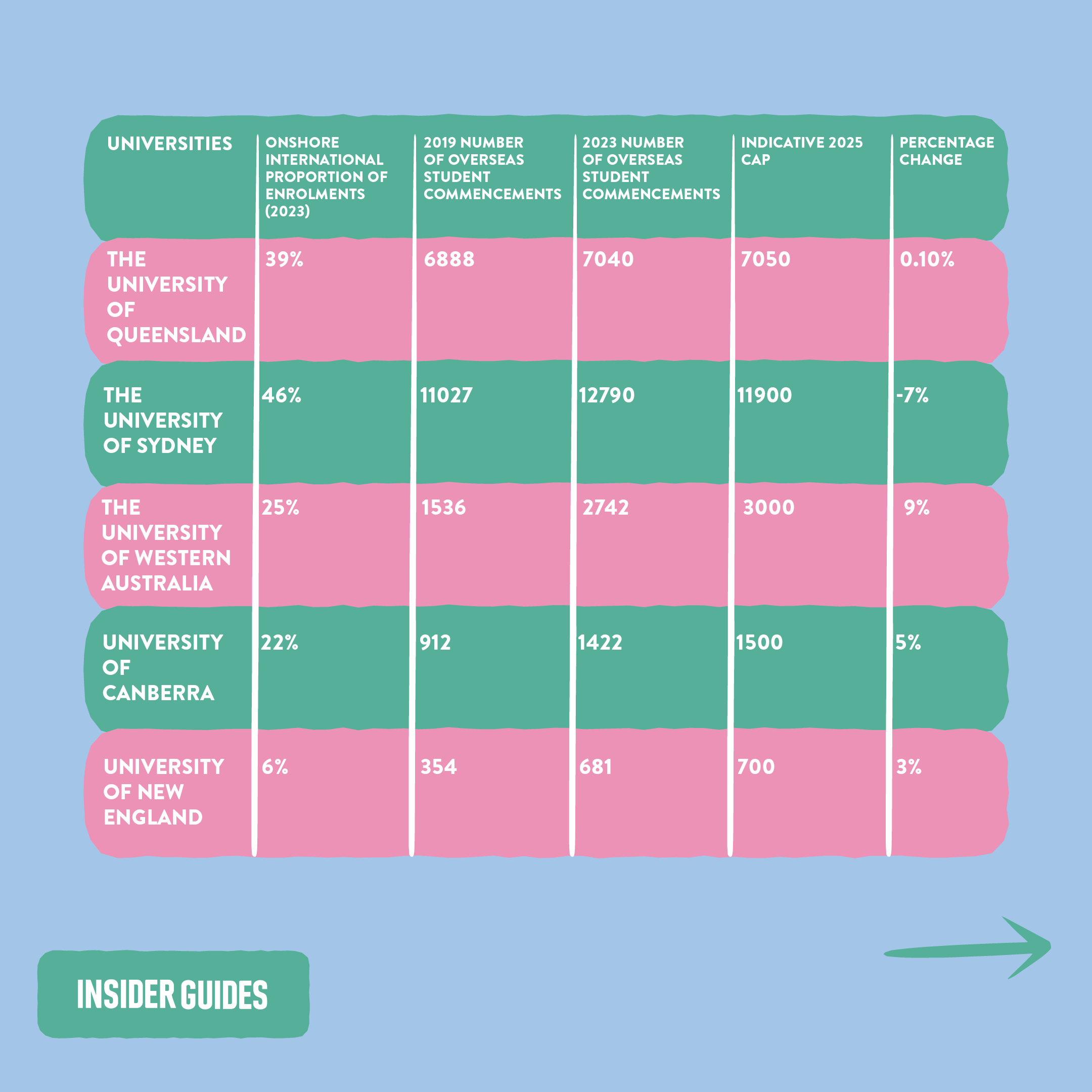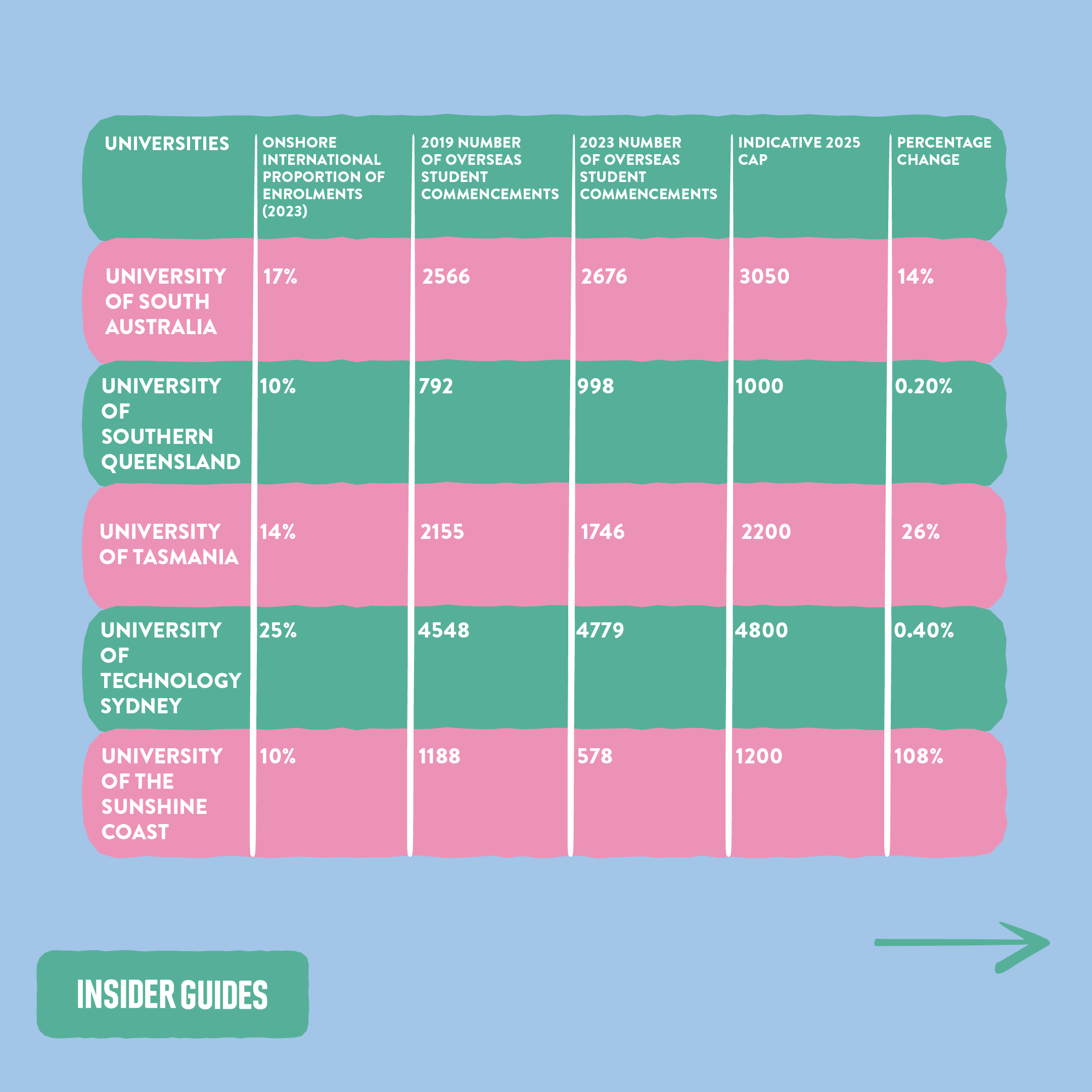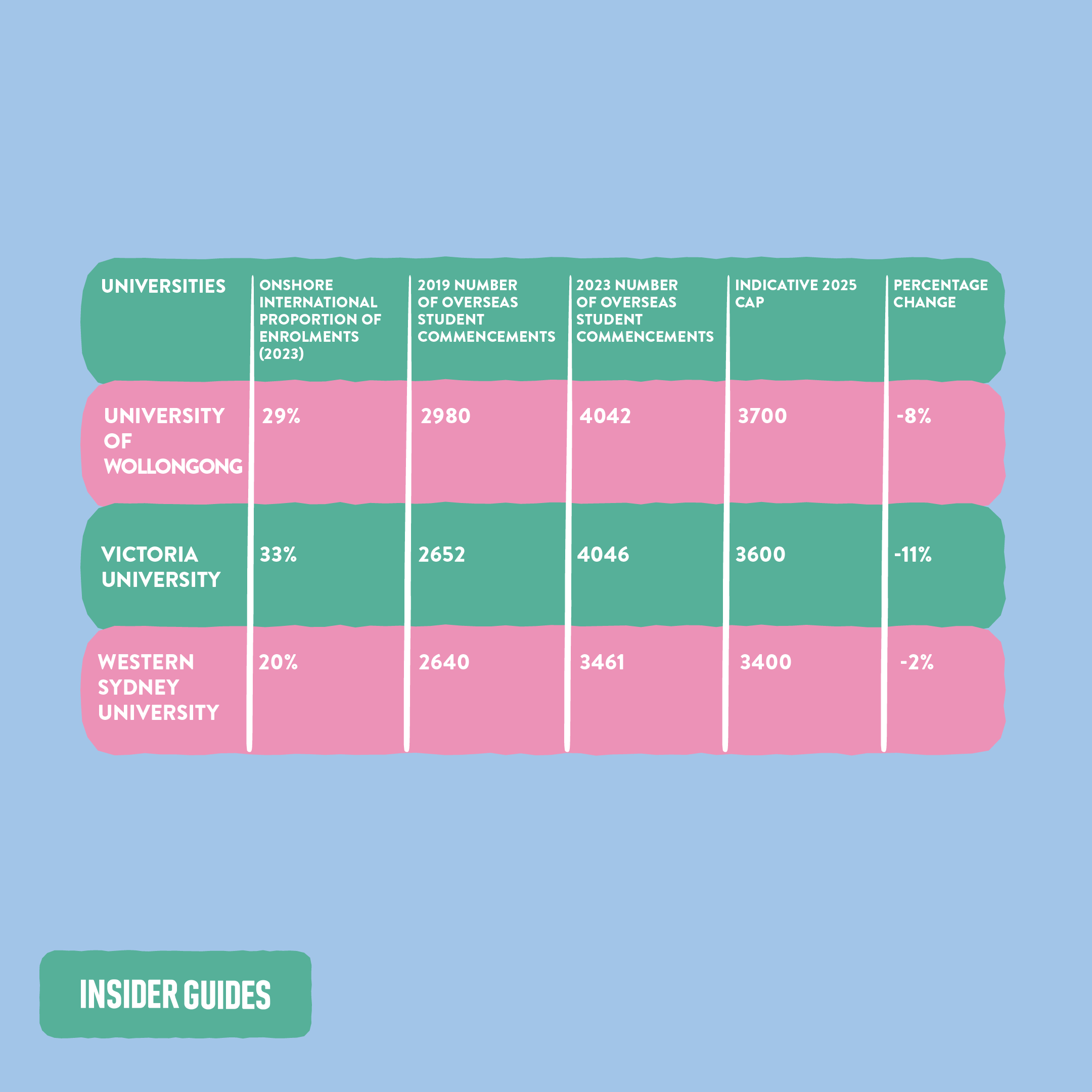With the Australian Government introducing a new enrolment cap for international students starting in 2025, many prospective and current students are wondering how these changes will affect their study plans.
This guide answers your most pressing questions about the new enrolment cap, including which universities are most affected, how it impacts visa applications, and what it could mean for your future study options in Australia.
What are the new international student caps?
Starting in 2025, the Australian Government will limit the number of international students to 270,000. Public universities have been allocated 145,000 places, the VET sector around 95,000, and private institutions roughly 30,000. These limits aim to better distribute students across Australia.
Why did the government introduce the cap?
The cap is designed to balance student distribution across the country, manage infrastructure and service pressures in larger cities, and protect education quality by reducing reliance on international student fees.
How does the cap number compare to previous years?
In 2023-24, 331,775 student visas were granted. The 2025 cap represents an 18 per cent reduction, affecting both public and private institutions. Many universities, especially those in major cities, will have fewer places for new enrolments compared to pre-pandemic levels.
What qualifies as a ‘new enrolment’?
A ‘new enrolment’ refers to any student who begins their studies in 2025 and was not previously enrolled at the institution. This includes first-year students, transfer students from other universities, and students returning after a gap in their studies. However, several groups are exempt from the cap:
- School students
- Postgraduate research students
- Students in standalone English-language courses
- Those funded by the Australian Government or foreign government scholarships.
- Students from the Pacific islands and Timor-Leste
How were the individual caps for education providers decided?
The caps, known as indicative student profiles (ISPs), are based on each institution’s pre-pandemic enrolments in 2019. For universities that increased international student enrolments between 2019 and 2023, a formula was applied, considering the percentage of international students on Australian campuses. Universities with fewer international students can include all their growth in the 2025 cap, while those with more than 37% international students can keep only 50% of their growth. The ISPs vary widely across institutions, and during Senate hearings on September 6, the process was criticised for being “somewhat random.”
For VET providers, those with a higher proportion of international students will receive a lower allocation.
Which universities are most affected?
Universities with high proportions of international students, especially those with over 30 per cent, are facing the steepest cuts. Federation University is hit hardest, with its cap reduced by 52 per cent, allowing only 1,100 international students in 2025—a 72 per cent drop compared to pre-pandemic numbers. Murdoch University will see a 34 per cent reduction in its intake, and the Australian National University (ANU) faces a 14 per cent cut.
Larger metropolitan universities like the University of Sydney and the University of Melbourne will also face a 7 per cent reduction, bringing their intakes to 11,900 and 9,300, respectively.
In contrast, regional universities like Charles Sturt University are seeing significant increases. Charles Sturt’s cap has risen by 517 per cent compared to 2023 but remains 67 per cent lower than its 2019 intake. The University of Notre Dame Australia and the University of the Sunshine Coast will also see substantial increases of 140 per cent and 108 per cent, respectively.
See the table here of public university enrolment allocations:
What about the VET sector?
The Vocational Education and Training (VET) sector has been significantly impacted by the new enrolment caps. Although specific numbers are not yet publicly available, The Koala News obtained information from several VET providers indicating the scale of the impact. Some providers have seen their international student caps slashed by over 50 per cent, with some institutions receiving as few as three places.
Troy Williams, CEO of the Independent Tertiary Education Council of Australia, warned that these cuts could lead to the closure of up to 300 independent colleges.
Will these caps affect me if I’m already enrolled?
No, the caps apply only to new enrolments starting in 2025. If you’re already enrolled, your place at the university is secure. However, current students may still be indirectly impacted by the cap. Universities with fewer international students may face funding challenges, potentially affecting services, class sizes and staff numbers.
Will the cap affect where I should apply?
If you’re considering applying to universities like the University of Sydney or Melbourne, both of which have seen their caps reduced by 7 per cent, competition for spots may intensify. In contrast, regional universities such as Charles Sturt University or the University of the Sunshine Coast have gained more capacity for international students, presenting alternative options for applicants seeking a higher chance of admission.
Will these changes affect visa applications for international students?
Yes, the new enrolment cap will replace Ministerial Direction 107, which previously prioritised visa applications based on an institution’s risk level. Under Direction 107, students enrolled at “high-risk” institutions often faced delays or rejections. This contributed to a 23 per cent drop in visa approvals last year, disproportionately affecting regional universities.
By removing Direction 107, the government aims to make the visa process fairer, with fewer rejections based on an institution’s risk rating. However, the new enrolment cap will still limit the total number of international students. So, while visa approvals may improve, competition for university spots could still increase, especially at institutions with reduced allocations.
Will the enrolment cap affect student housing development?
Starting in 2026, universities that build more student housing may be allowed to enrol more international students.
While this could lead to more housing availability, some universities, like the University of Melbourne, are worried that uncertainty around future enrolment caps might make it harder for them to commit to building new student housing. Without clear and consistent rules, universities and investors may hesitate to fund long-term housing projects, which could limit the growth of new accommodation options for students in the future.
So, is the enrolment cap definitely happening, and when will we know for sure?
Not quite yet. On September 12, it was confirmed that the committee overseeing these changes will reconvene, though the exact dates are yet to be confirmed. This means more evidence will still be gathered from stakeholders before any final decision is made. While the cap is proposed, there’s still a chance it could be modified or delayed.

